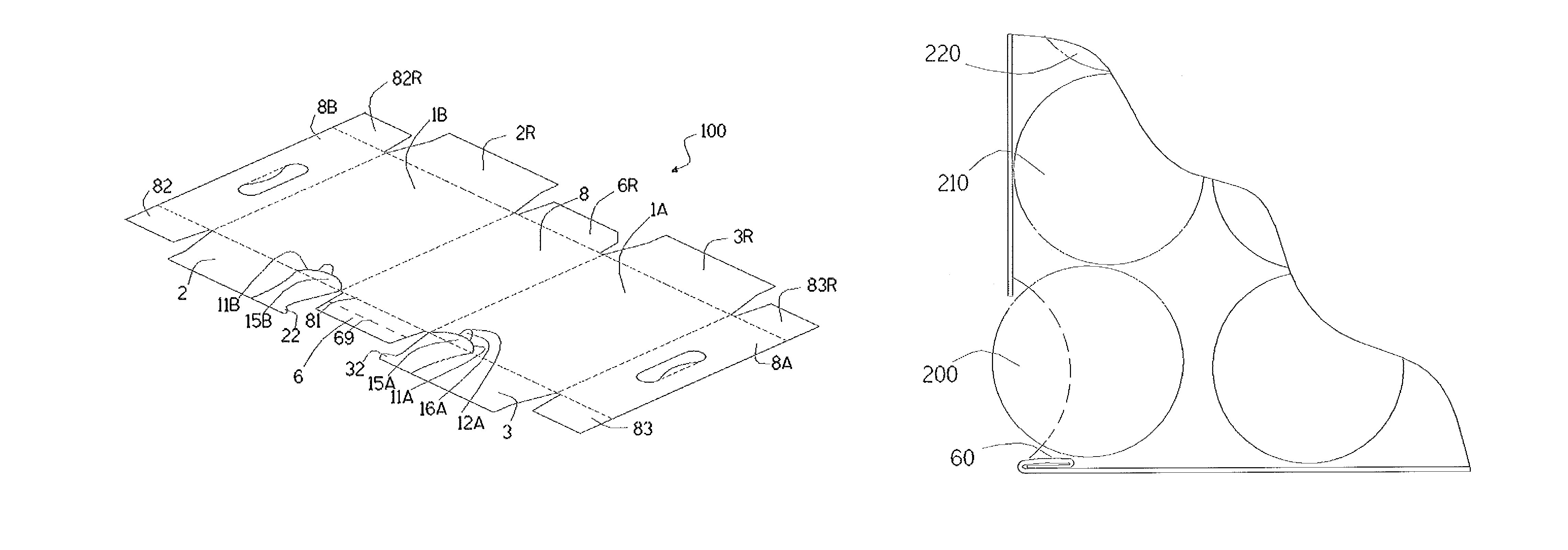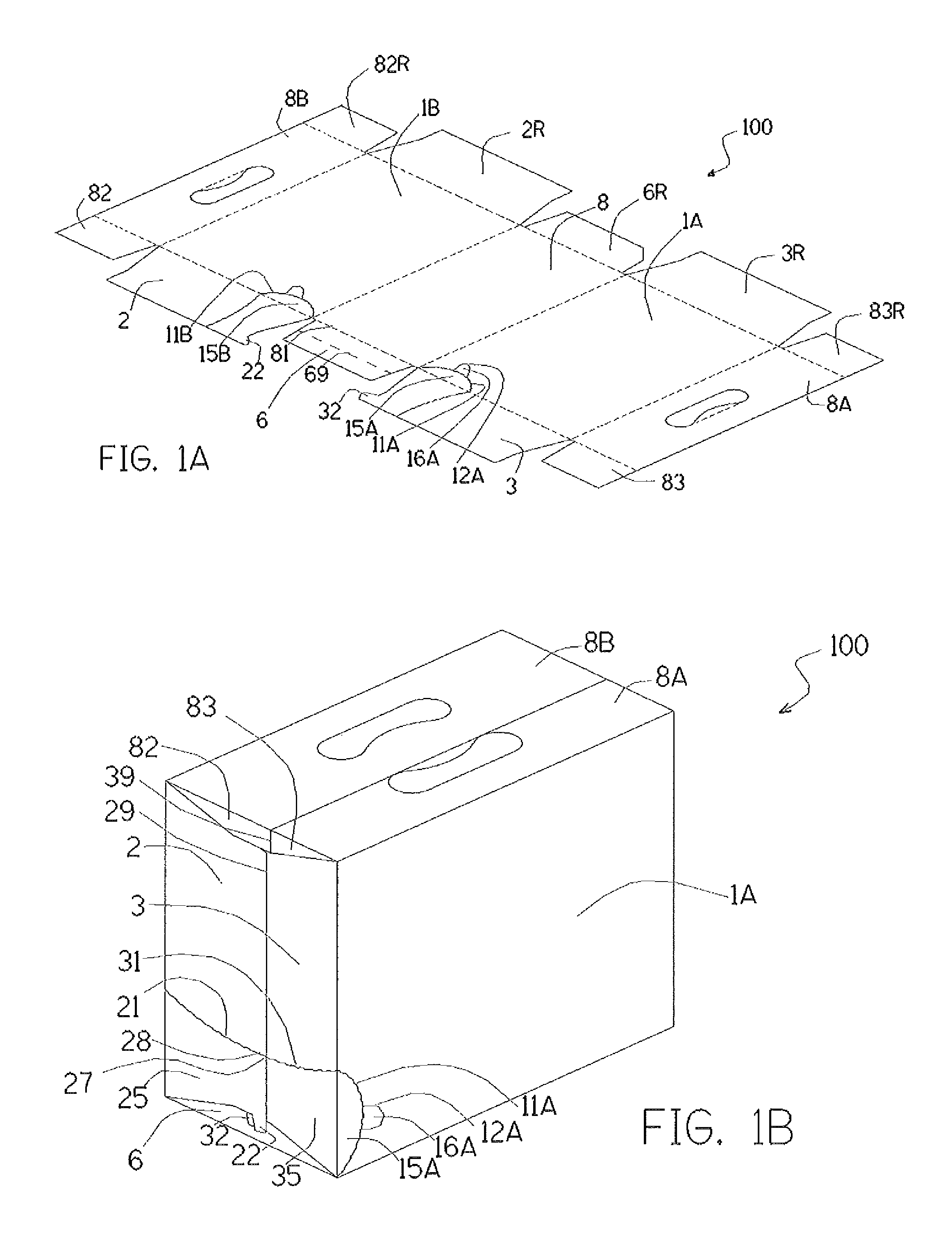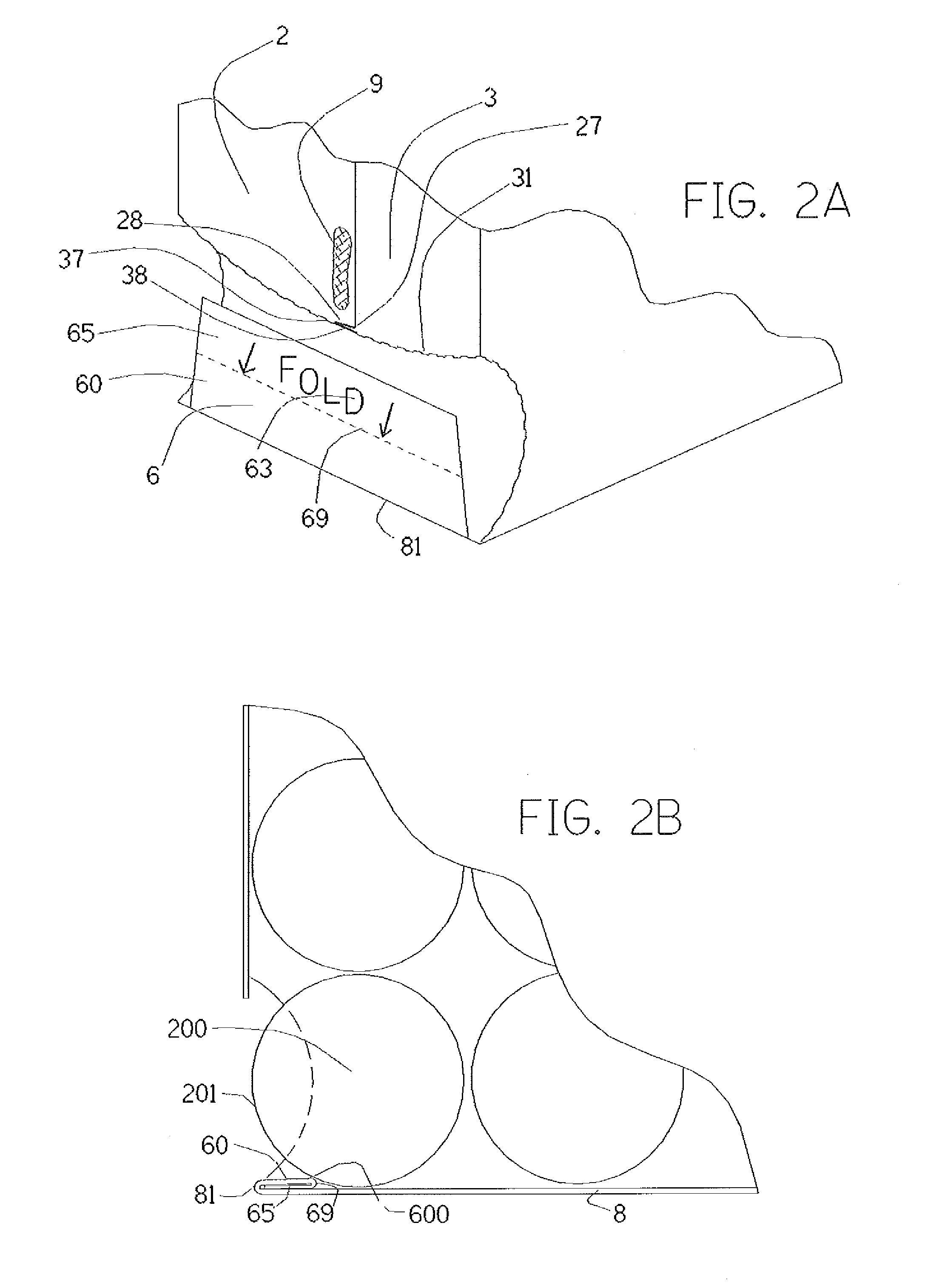Can dispenser for a carton
a dispenser and carton technology, applied in the field of cartons, can solve the problems of reducing affecting the service life of the carton, so as to reduce the cost of the carton, facilitate transportation, and minimize the number of components.
- Summary
- Abstract
- Description
- Claims
- Application Information
AI Technical Summary
Benefits of technology
Problems solved by technology
Method used
Image
Examples
Embodiment Construction
[0055]The following detailed description and appended drawings describe and illustrate various exemplary embodiments of the invention. The description and drawings serve to enable one skilled in the art to make and use the invention, and are not intended to limit the scope of the invention in any manner. In respect of the methods disclosed, the steps presented are exemplary in nature, and thus, the order of the steps is not necessary or critical.
[0056]FIG. 1A illustrates components of the present invention as a blank for a 12-pack one-piece carton 100. FIG. 1B illustrates components of the present invention as the 12-pack carton 100 assembled into a hollow carton and filled with storage cans of a beverage or the like (not shown). A right side panel 1A is hingedly attached to a lower panel 8 (not shown in FIG. 1B), as is a left side panel 1B (not shown in FIG. 1B). The upper structure is made from an upper right flap 8A and an upper left flap 8B.
[0057]The rear end closure structure i...
PUM
 Login to View More
Login to View More Abstract
Description
Claims
Application Information
 Login to View More
Login to View More - R&D
- Intellectual Property
- Life Sciences
- Materials
- Tech Scout
- Unparalleled Data Quality
- Higher Quality Content
- 60% Fewer Hallucinations
Browse by: Latest US Patents, China's latest patents, Technical Efficacy Thesaurus, Application Domain, Technology Topic, Popular Technical Reports.
© 2025 PatSnap. All rights reserved.Legal|Privacy policy|Modern Slavery Act Transparency Statement|Sitemap|About US| Contact US: help@patsnap.com



